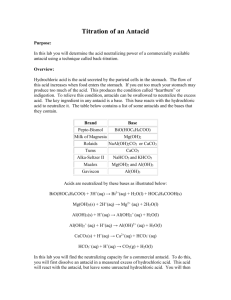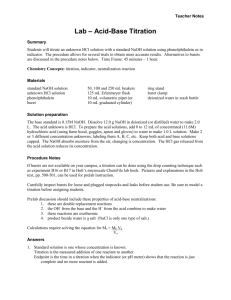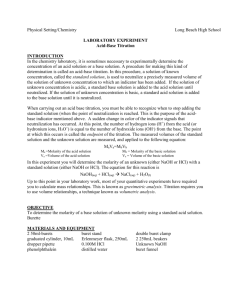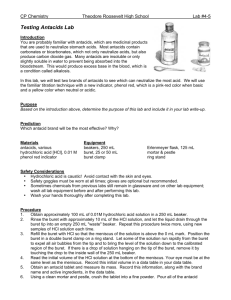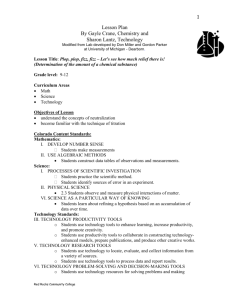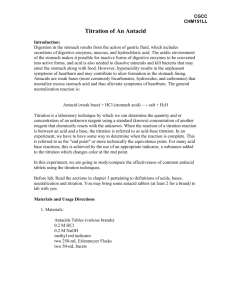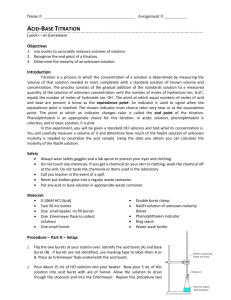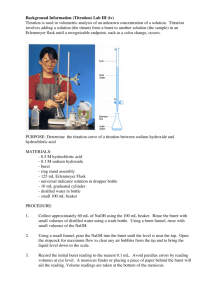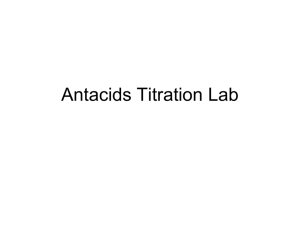Eggshell/Antacid Burets Lab Introduction/Purpose
advertisement
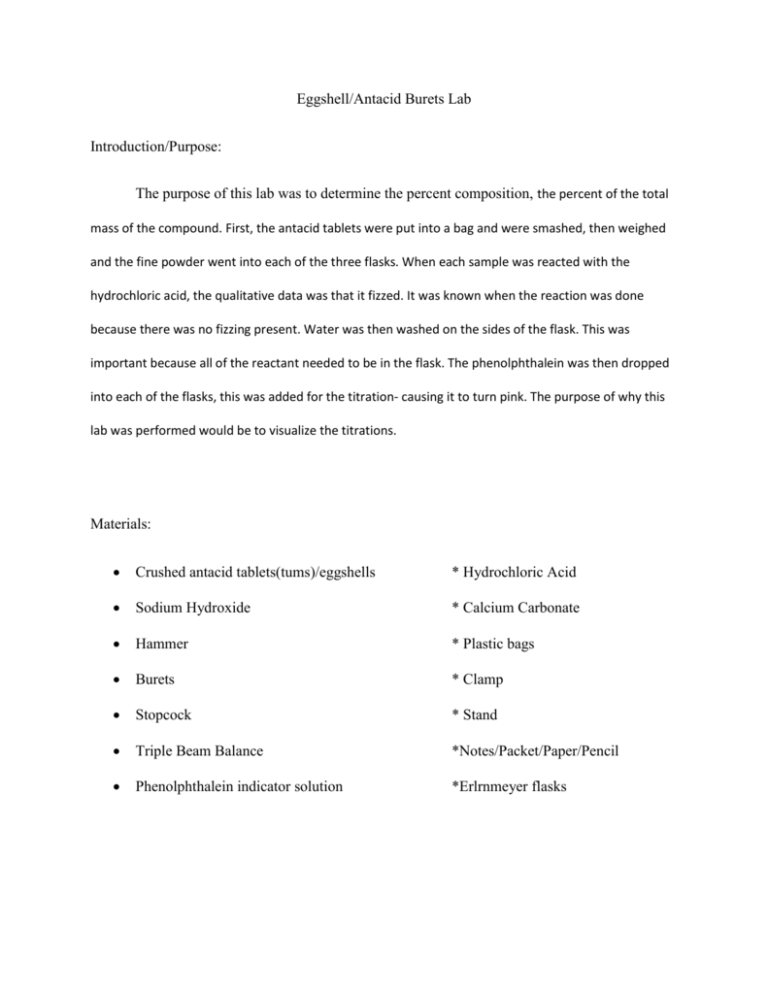
Eggshell/Antacid Burets Lab Introduction/Purpose: The purpose of this lab was to determine the percent composition, the percent of the total mass of the compound. First, the antacid tablets were put into a bag and were smashed, then weighed and the fine powder went into each of the three flasks. When each sample was reacted with the hydrochloric acid, the qualitative data was that it fizzed. It was known when the reaction was done because there was no fizzing present. Water was then washed on the sides of the flask. This was important because all of the reactant needed to be in the flask. The phenolphthalein was then dropped into each of the flasks, this was added for the titration- causing it to turn pink. The purpose of why this lab was performed would be to visualize the titrations. Materials: Crushed antacid tablets(tums)/eggshells * Hydrochloric Acid Sodium Hydroxide * Calcium Carbonate Hammer * Plastic bags Burets * Clamp Stopcock * Stand Triple Beam Balance *Notes/Packet/Paper/Pencil Phenolphthalein indicator solution *Erlrnmeyer flasks Procedure: 1.) First, put some tums (antacid tablets) in a bag. 2.) Next, smash them with a hammer. 3.) Then, weigh (3) ½ gram samples into different flasks. 4.) React each of the flasks with 25.0 mL of the 1.0 M of the hydrochloric acid. 5.) Wash all the sides of the flask with some water. (to make sure all of it is in there.) 6.) Add a few drops (2-3) of the phenolphthalein to all of the flasks. 7.) Make a titration with the sodium hydroxide. Data: Mass of crushed antacid tablet Volume of HCL used Initial reading, NaOH Buret Final Reading, NaOH buret Volume NaOH Moles of HCl consumed by antacid Mass of NaCO3 in sample % NaCO3 in sample Trial 1 ½ gram Trial 2 ½ gram Trial 3 ½ gram 24.5 M 0 50 25 M 0 35 25.3 M 0 20 1.0 M 24.5 mL 1.0 M 25 mL 1.0 M 25.3 mL -1.28 -0.5 0.27 -2.55% -1% 0.53% *See separate sheet for sample calculations, qualitative data, and reactions. Analysis and Conclusion: In conclusion, there were neutralizations because the acid and base balanced out in the end. The HCL in the lab acted as the acid because it donated a hydrogen in the reaction. The HCL reacting with the CaCO3 was a decomposition reaction and double replacement because the oxygen lost one and went to the water. The oxygen in CaCO3 acted as the base because it accepts the hydrogen. The reaction was over when the fizzing had stopped (carbon dioxide was being released.), qualitative data. Another piece of qualitative data is that the liquid turned pink when the phenolphthalein, an indicator, was added to the solution. The NaOH was used to see what was left over. Some quantitative data: ½ gram was used for the crushed antacid tablets, the initial reading for each trial was 0, the final readings were between 20 and 50, and moles of HCl consumed by antacid were between 24.5 and 25.3. (More are in notes.) Burets are pieces of glass used to deliver amounts of liquid, usually for titrations. It’s a long, glass cylinder that has one opening at the top and is closed at the bottom by a stopcock valve. This controls the flow of the liquid. Questions answered: When reading the buret, the numbers are read from the top down. When recording buret volume, the decimal point should be recorded to the hundredth place. The sides of the buret are tapped after filling it to make sure all the solution was delivered. A few milliliters are drained through the tip after filling the buret because the hanging drop is part of the volume being delivered by the buret. After delivering a certain volume into a flask, a drop of liquid is hanging from the tip. This is part of the delivered volume and should be added to the flask. Error Analysis: When doing this lab there were a few sources of error. While pouring the HCL into the burets, it was spilled, running down into the beaker. This was a source error because it caused it to over titrate. Also, when the liquid was already in the burets, some leaked out into the beaker. That was an error because we could not measure how much was let into the beaker. The last source error was when there was an over titration and the flask turned too pink. Some other source errors that could have been possible would have been if water was left in the burets, or if the sodium hydroxide sat out for too long with the lid off- sucks water out of the air. You can fix some of them by making sure the stopcock is closed when you need it to be, try not to let as much liquid out, try hard not to spill anything, and to make sure to keep the lid on the liquid when you’re not using it. Works Cited: Mrs. Cleaver, Packet, 5/2/03 R.G. Drage Career Technical Center, Massillon, Oh.

